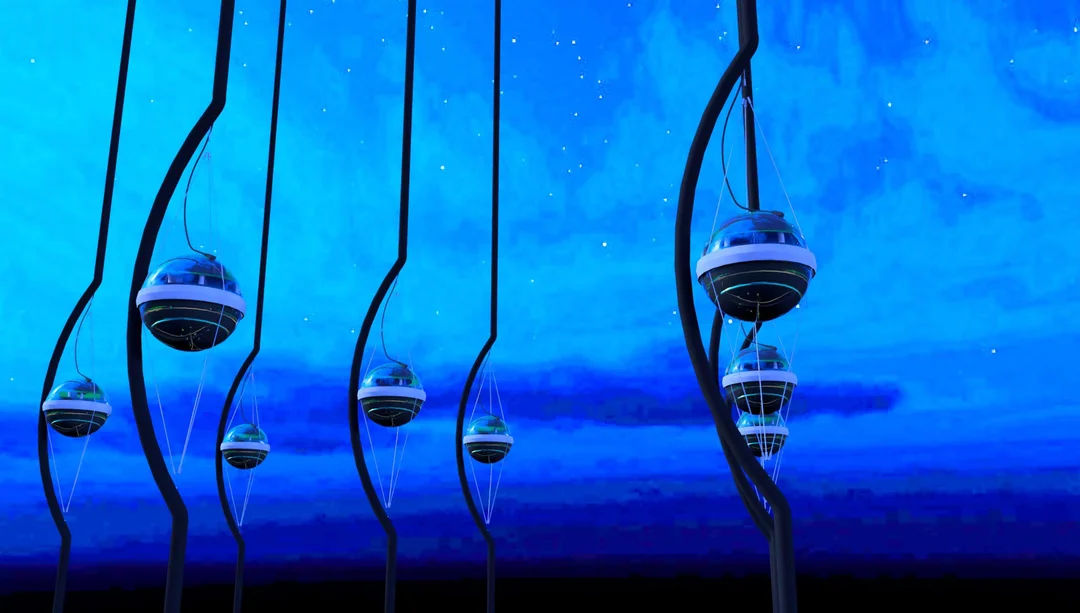
Neutrino Mystery: IceCube Detects Unexplained Signal from Squid Galaxy, Challenging Cosmic Ray Theory
In a groundbreaking discovery, the IceCube Neutrino Observatory, nestled deep within the Antarctic ice, has detected a peculiar neutrino signal emanating from galaxy NGC 1068, also known as the Squid Galaxy. This enigmatic signal presents a challenge to established theories regarding the origin of cosmic rays and the processes occurring within supermassive black holes.
Typically, high-energy neutrinos are accompanied by bursts of gamma rays. However, the signal from NGC 1068 displays a strong stream of neutrinos with surprisingly little gamma radiation, leaving scientists baffled. This unexpected observation has ignited a quest for alternative explanations, leading to a radical new theory.
The Puzzle: Neutrinos without Gamma Rays
The IceCube Neutrino Observatory, a massive array of sensors embedded in a cubic kilometer of clear Antarctic ice, is designed to detect these elusive particles. Neutrinos, being subatomic particles that barely interact with matter, are notoriously difficult to detect. Yet, IceCube successfully captured a significant neutrino burst from NGC 1068, setting the stage for scientific intrigue.

A Bold New Theory: Helium Nuclei and Neutron Decay
Researchers from UCLA, the University of Osaka, and the Kavli Institute for the Physics and Mathematics of the Universe have proposed a novel explanation published in Physical Review Letters. They suggest that the neutrinos from NGC 1068 may originate from the decay of neutrons, a byproduct of helium nuclei fragmenting under intense ultraviolet radiation near the galaxy's central supermassive black hole.
Alexander Kusenko, professor of physics and astronomy at UCLA and a senior fellow at Kavli IPMU, stated, "We have telescopes that use light to look at stars, but many of these astrophysical systems also emit neutrinos. To see neutrinos, we need a different type of telescope, and that's the telescope we have at the South Pole."
This hypothesis challenges the conventional understanding that energetic neutrinos are primarily produced by interactions between protons and photons, which should result in comparable gamma radiation. According to this new model, helium nuclei accelerated in powerful jets near the black hole collide with ultraviolet photons, releasing neutrons that subsequently decay into neutrinos without producing many gamma rays.

Implications for Understanding Black Holes
This breakthrough offers unprecedented insights into the extreme conditions around supermassive black holes, including the one at the center of our own galaxy. By understanding how cosmic jets can emit powerful neutrinos without a corresponding gamma-ray glow, scientists can unravel the complexities of these enigmatic regions. As Kusenko notes, this discovery could reveal previously unknown aspects of the environment near the supermassive black hole in NGC 1068.
Furthermore, this discovery holds implications for neutrino astronomy. The team suggests that similar processes might be occurring in other galaxies, producing neutrinos that have gone undetected due to their faint gamma-ray signatures.

Looking Ahead
The enigmatic neutrino signal from NGC 1068 has opened a new chapter in neutrino astronomy, offering an unprecedented opportunity to probe the mysteries of supermassive black holes. As scientists continue to analyze IceCube’s data and explore similar galaxies, they hope to refine this new theory and further unravel the secrets of the universe. This breakthrough highlights the importance of investing in basic science, as discoveries that seem "useless" today can lead to transformative technologies in the future.
What are your thoughts on this groundbreaking discovery? Do you think this new theory will hold up as more data is collected from other galaxies? Share your insights and leave a comment below!